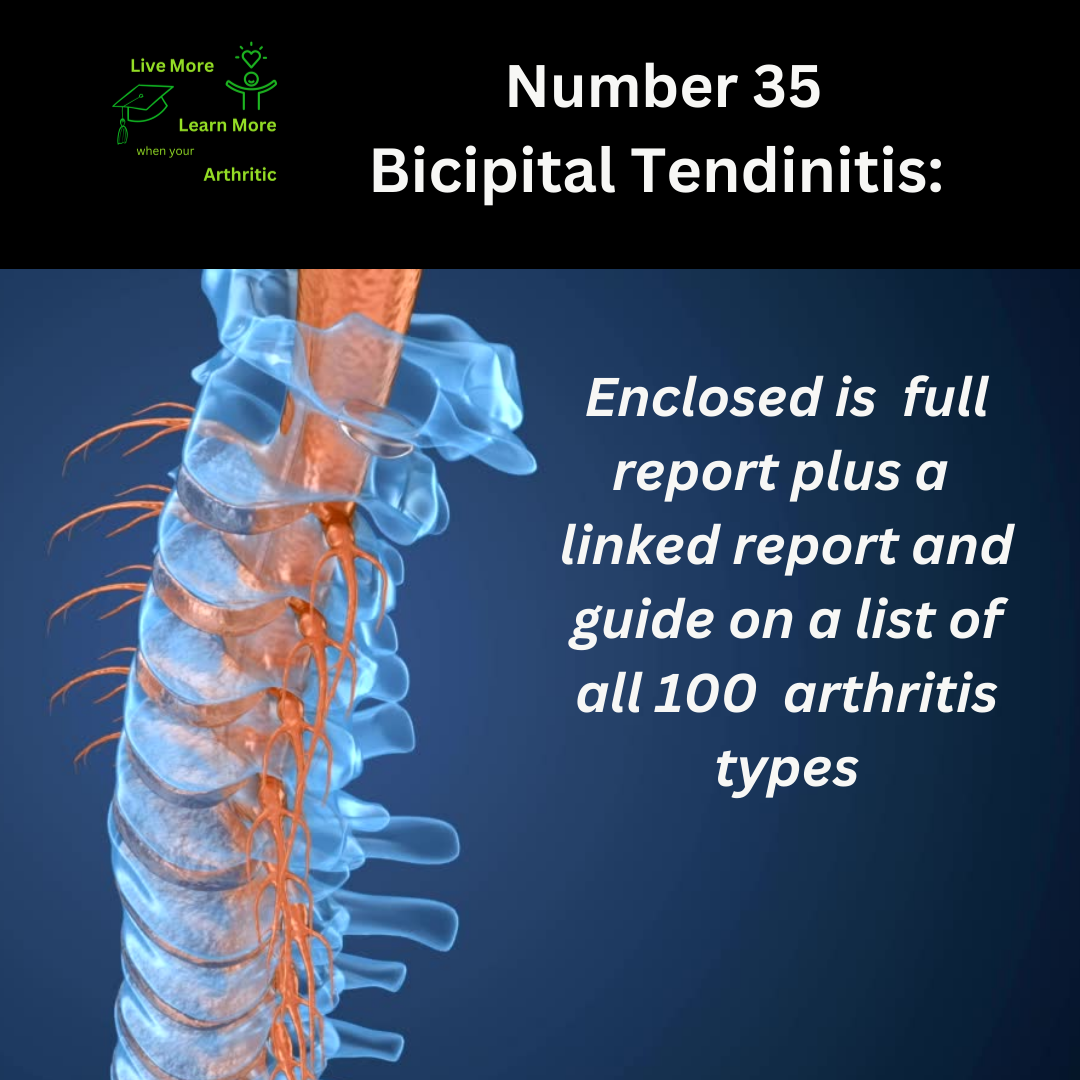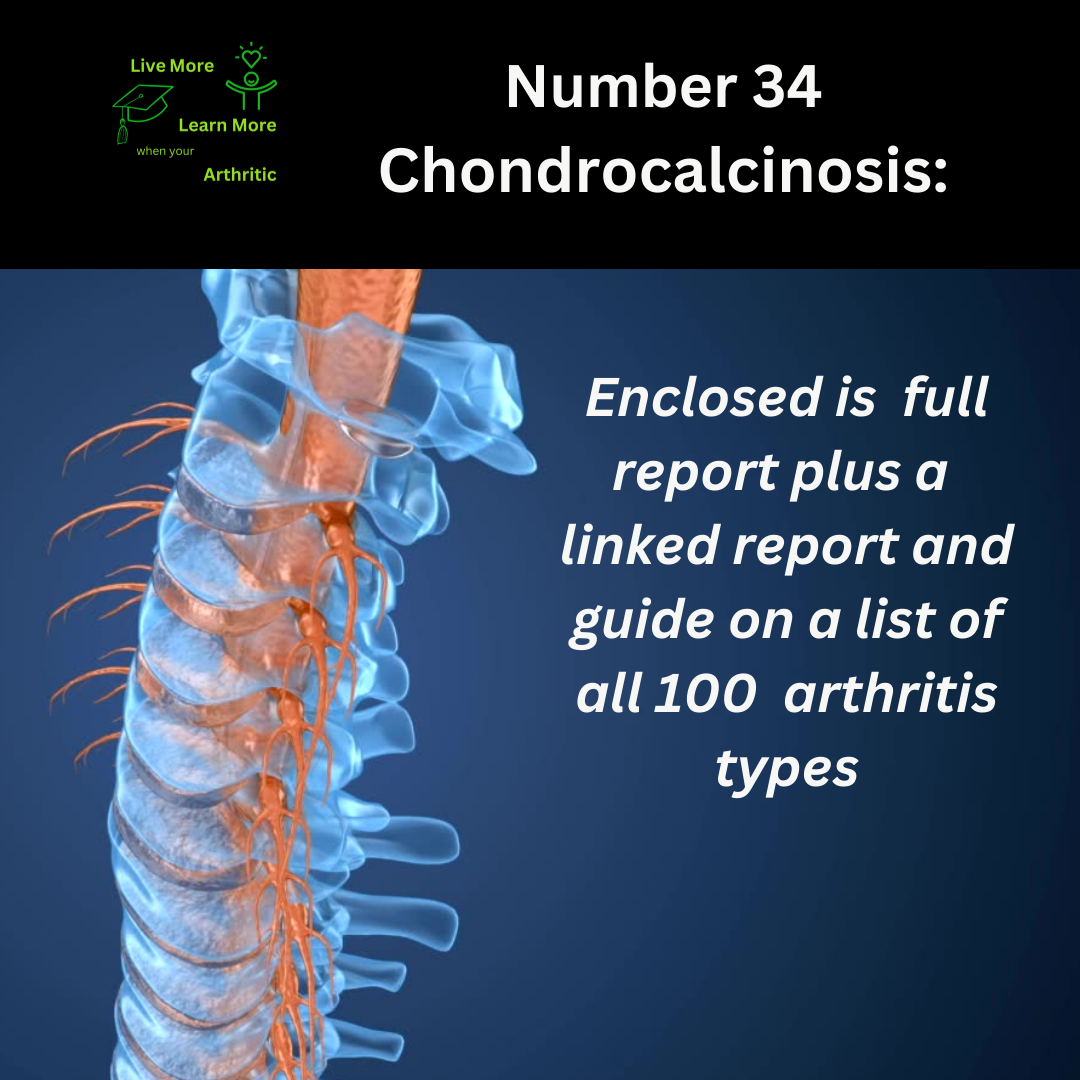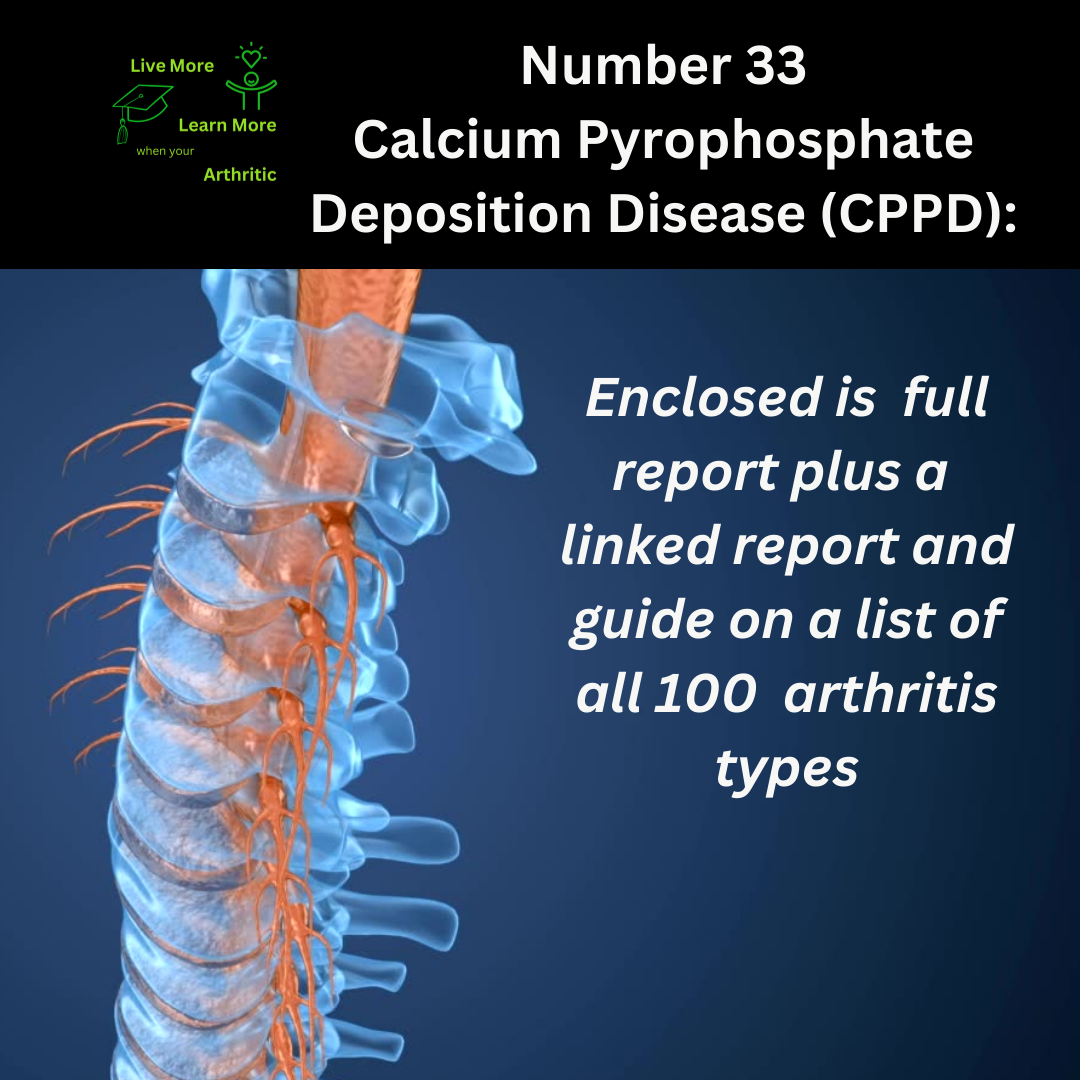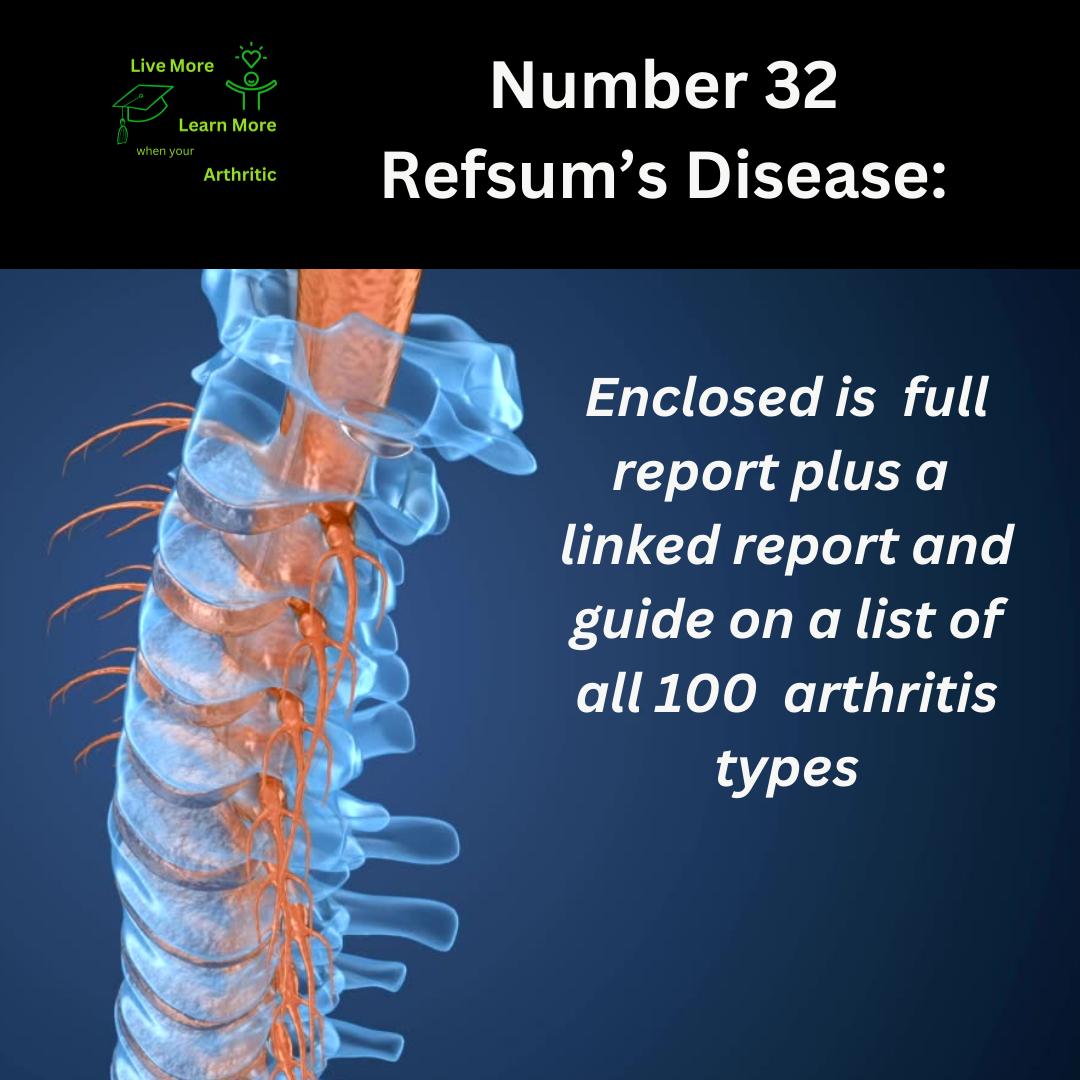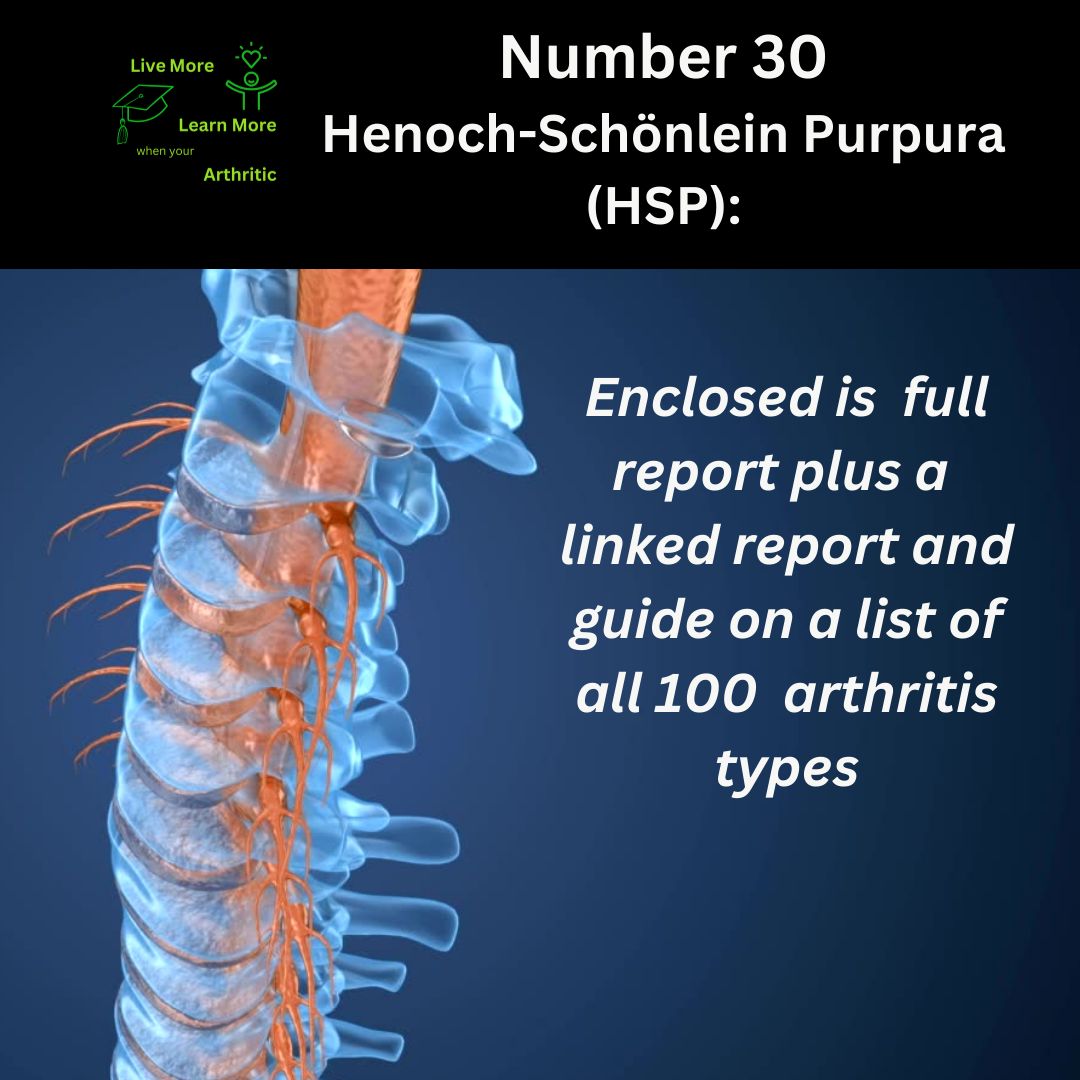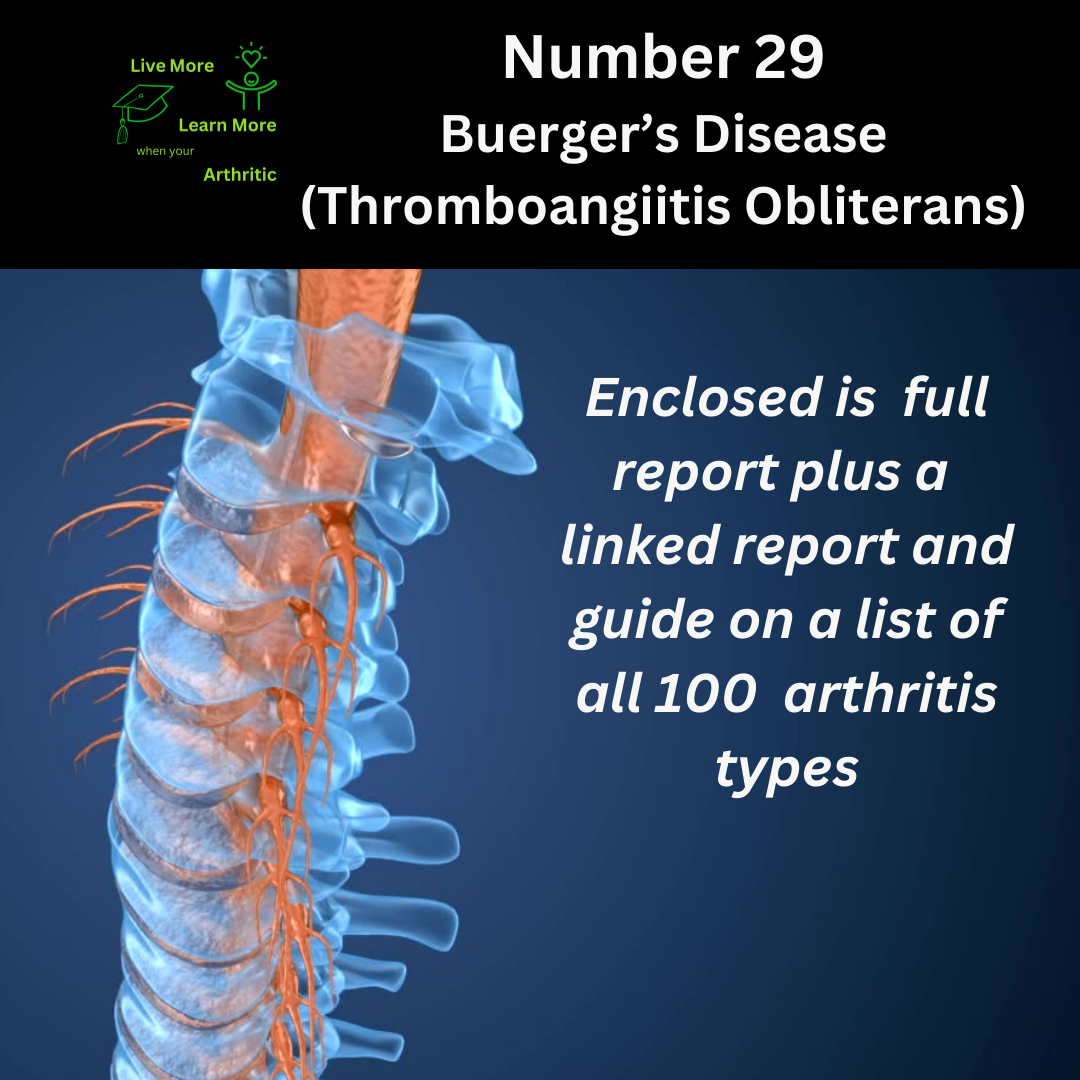Arthritis Care
The goal of treatment is to provide pain relief, increase joint mobility and strength, and control the disease as much as possible.
-
Bicipital Tendinitis: Number 35 on the list of 100 types of Arthritis
Exploring Bicipital Tendinitis: A Personal Journey
Bicipital tendinitis, often referred to as biceps tendinitis, is a condition that affects the tendon of the biceps muscle in the shoulder. It’s not just another medical term—it’s a story of resilience, discovery, and the pursuit of a better quality of life.
-
Osteoarthritis (OA) Self Examination Test
-
Exploring the Link Between Arthritis and Cancer: Understanding and Managing the Connection
Arthritis and cancer are two complex and prevalent health conditions that can significantly impact an individual’s quality of life. Recent research has revealed a notable association between these conditions, with arthritis patients exhibiting a higher prevalence of cancer compared to those without arthritis. This comprehensive guide aims to delve into the relationship between arthritis and cancer, elucidate the underlying factors contributing to this connection, and provide actionable strategies for arthritis patients to navigate and mitigate their heightened cancer risk.
-
The Root Cause of Dermatomyositis
Dermatomyositis is a rare but impactful autoimmune disease that leaves its mark on the skin and muscles, causing inflammation, weakness, and a distinctive rash. It’s like your body’s immune system throws a party and forgets to invite your muscles, instead attacking them as if they were unwanted guests. This disorder can make daily activities feel like scaling a mountain, turning simple tasks into Herculean feats.
-
Rheumatoid Arthritis Severity Scale (RASS), a self-assessment guide
The Rheumatoid Arthritis Severity Scale (RASS), while often administered by healthcare professionals, can also be self-assessed with a set of targeted questions. The maximum cumulative score across Disease Activity, Functional Impairment, and Physical Damage is 300. Below is a self-assessment guide to help individuals gauge their own status:
-
Managing Arthritis and Diabetes Risk: A Comprehensive Guide
Introduction: Living with arthritis presents various challenges, one of which is the increased risk of developing diabetes. Research indicates that individuals with arthritis are almost 40% more likely to have diabetes compared to those without arthritis. This comprehensive guide aims to explore why this correlation exists and provide practical strategies to lower the risk of diabetes among individuals with arthritis.
-
Chondrocalcinosis: Number 34 on the list of 100 types of Arthritis
-
Calcium Pyrophosphate Deposition Disease (CPPD): Number 33 on the list of 100 types of Arthritis
-
The Economic Burden of Having Arthritis: A Deep Dive into Financial and Emotional Toll
Introduction
Living with arthritis is tough enough, but when you add the economic burden into the mix, it feels like adding insult to injury. This article delves into the economic impact of arthritis, exploring what causes this financial strain, the likelihood of experiencing it, and how it affects life expectancy. We’ll also compare the economic burden on those with and without arthritis, and examine how autoimmune issues complicate the financial landscape. All with a touch of wit, humor, and an uplifting tone!
-
Chronic Inflammation and Pain in Arthritis: Risks, Comorbidities, and Life Expectancy
Introduction
Chronic inflammation and pain are unwelcome bedfellows in the world of arthritis, creating a vicious cycle of discomfort and potential disability. But what are the interconnected risks and comorbidities associated with these conditions? Let’s explore the causes, effects, and complexities of arthritis-related chronic inflammation and pain, all while injecting some humor, wit, and a personal touch.
-
Refsum’s Disease: Number 32 on the list of 100 types of Arthritis
-
Weight Gain & Arthritis: Breaking the Cycle – YouTube Video
-
The Root Cause of Degenerative Disc Disease
What is Degenerative Disc Disease?
Degenerative Disc Disease (DDD) is not exactly a “disease” but rather a term used to describe the natural wear and tear on a spinal disc as we age. Spinal discs are the soft, rubbery pads found between the vertebrae that provide cushioning and flexibility to the spine. Over time, these discs can degenerate, leading to pain, reduced mobility, and other symptoms.
The human spine is a marvel of engineering, but it’s also vulnerable to the ravages of time. Think of the spinal discs like the shock absorbers in your car. When they’re new, they help everything run smoothly. But as they age, they start to break down, leading to a bumpy ride. For some, this process can be relatively painless, while for others, it can be a source of chronic pain and disability.
-
Undifferentiated Connective Tissue Disease (UCTD): Number 31 on the list of 100 types of Arthritis
-
What Causes Increased Loss of Independence with Arthritis?
Let’s face it: no one dreams of a life spent in a Lazy Boy chair with a remote control as their most trusted companion. Yet, for many people with arthritis, this scenario feels all too familiar. Arthritis, that unwelcome party crasher, brings with it a host of challenges that can slowly chip away at one’s independence. But what exactly causes this increase in loss of independence?
Arthritis isn’t just about the pain. Sure, the constant ache in your joints can make even the most mundane tasks feel like Herculean efforts, but there’s more to it than that. The inflammation, stiffness, and decreased range of motion that come with arthritis can severely limit one’s ability to perform everyday activities. Imagine trying to open a jar of pickles when your hands feel like they’ve been encased in cement. Or trying to climb a flight of stairs when your knees are screaming in agony. Simple tasks like dressing, cooking, and even bathing can become monumental challenges.
-
What Causes Increased Sleep Disturbances with Arthritis?
Ah, sleep – that sacred, elusive haven where we recharge our bodies and minds, preparing to face another day. But for those with arthritis, the journey to this tranquil sanctuary can feel like trekking through a treacherous, thorny jungle. So, what causes this unholy alliance between arthritis and sleep disturbances? It turns out, several factors conspire to keep those suffering from arthritis wide awake at night, staring at the ceiling and counting sheep.
Inflammation is a key player here. Arthritis, being an inflammatory disease, causes the body’s immune system to go into overdrive, attacking its own tissues. This inflammation doesn’t just wreak havoc on the joints; it also disrupts sleep. The pain and discomfort that come with inflamed joints make it difficult to find a comfortable sleeping position. Tossing and turning becomes the nightly dance routine nobody signed up for.
Moreover, the stiffness and reduced mobility characteristic of arthritis don’t just clock out at bedtime. They linger, turning simple movements into Herculean tasks. Imagine trying to turn over or adjust your blankets with joints that feel like they’ve been set in concrete. This constant struggle adds to the restless nights.
-
Henoch-Schönlein Purpura (HSP): Number 30 on the list of 100 types of Arthritis
-
The Unsteady Dance with Arthritis: Navigating Fall Risks – YouTube Video
- ArthritiCare, Arthritis Care, Arthritis News, Arthritis Pain, Arthritis Remission, Arthritis Root Causes
The Root Cause of Cryopyrin-Associated Periodic Syndromes (CAPS)
Cryopyrin-Associated Periodic Syndromes (CAPS) is a group of rare, inherited, autoinflammatory disorders. These syndromes are characterized by recurrent episodes of systemic inflammation, leading to a variety of symptoms, including fever, rash, joint pain, and fatigue. CAPS is caused by mutations in the NLRP3 gene, which encodes a protein called cryopyrin. This protein plays a crucial role in the body’s inflammatory response, and mutations lead to its overactivation, causing excessive inflammation.
-
Buerger’s Disease (Thromboangiitis Obliterans): Number 29 on the list of 100 types of Arthritis
Navigating Life with Buerger’s Disease: A Tale of Resilience and Hope
Chapter 1: The Unpredictable Beginning
Imagine being a young adult and suddenly experiencing intense pain, numbness, and discoloration in your fingers or toes. This could be the bewildering onset of Buerger’s Disease (Thromboangiitis Obliterans), a rare and challenging condition affecting blood vessels.
